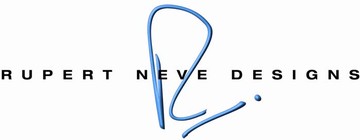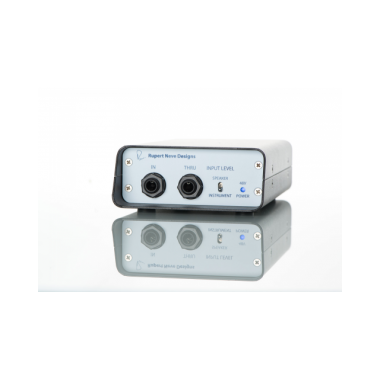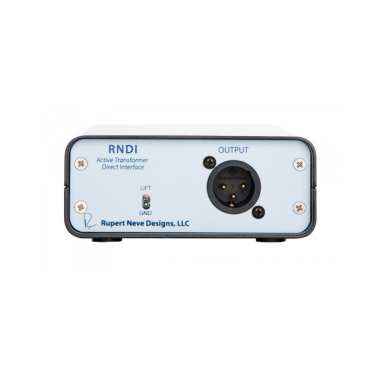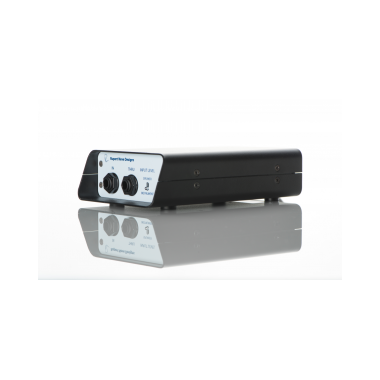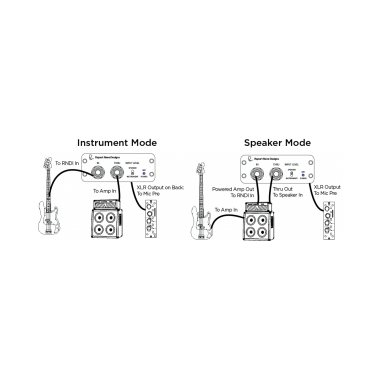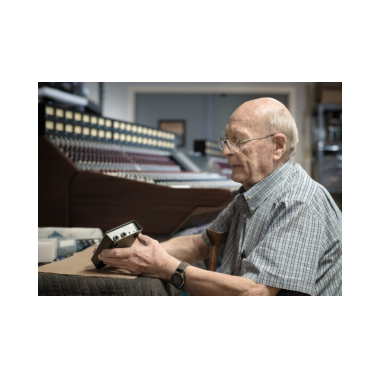- Flyline Music AG
Hauptmenü:
×
- index
-
Produkte
-
Mikrofone
-
3DIO
- Microphones
- Pro Microphones
- Accessoires
- AEA
- Antelope Audio
- Avantone Pro
- Bock Audio Design
-
Cascade Microphones
- Short Ribbons
- Long Ribbons
- Specialty Ribbons
- Accessoires
- Cloud Microphones
- Chandler Limited
- Coles Electroacoustics
- Dizengoff Audio
-
Earthworks
- Vocal Series
- PianoMic Series
- Drum Series
- SR Series
- TC Series
- QTC Series
- Periscope Series
- Measurement Series
- Accessoires
- Ear Trumpet Labs
- Granelli Audio Labs
- Josephson
- Kahayan Pro Audio
- Luke Audio
- Manley Labs
- Mojave Audio
- Placid Audio
- Roswell Pro Audio
- Royer Labs
- Sontronics
- Stager Microphones
- Townsend Labs
- Vanguard Audio Labs
- Warm Audio
-
3DIO
-
Studio Equipment
- A Designs Audio
- ACME Audio
- AEA
- AMS Neve
- Analoguetube
-
Antelope Audio
- Discrete Synergy Core Interfaces
- Discrete Interfaces
- HDX & USB Interfaces
- Thunderbolt & USB Interfaces
- Stereo Converters
- Master Clocks
- Mic Preamps
- Monitor Controller
- API
- Asparion
- Audified
- Avalon Designs
-
BAE
- Guitar Tools
- 500 Series
- Deskop Mic Preamps
- Modules & 19"
- Bettermaker
- Big Bear Audio
- Black Box
-
Black Lion Audio
-
500 Series
- Modules
- Rack
-
Outboard
- Mic Preamps
- Compressors
- Studio Clocks
-
500 Series
-
BURL Audio
- B1 500 Series Modules
- B2 Bombers
- B26 Orca
- B32 Vancouver
- B16 Mothership
- B80 Mothership
-
Chandler Limited
- Abbey Road Series
- 500 Series
- Germanium Series
- Rack Mixer
- Guitar Pedals
-
Cranborne Audio
- Outboard
- Desktop
-
500 Series
- Modules
- Racks
- Crane Song
-
Daking
- Preamplifiers
- Compressors
-
Dangerous Music
- Converters
- Controller
- Router
- Summierer
- Outboard
- Dave Hill Designs
- Dizengoff Audio
-
Drawmer
- Monitor Controller
- Sound Protection
- 60ies / 70ies Series
- MXPro Series
- Gates & Compressors
- Digital Management
- Signal Splitters
- Signal Distribution
- Power Amplifier
- Earthworks
-
Elysia
- 500 Series Modules
- 19" Outboard
-
Empirical Labs
- 500 Series
- 19" Outboard
- Plug-In
- Flock Audio
-
Fredenstein
- MixCube
- HD Reference Preamps
-
500 Series
- Artistic Modules
- F600 Modules
- Racks
- Vintage Analog Series
- Outboard Equipment
- Metering
- Grace Design
- Great River Electronics
-
Heritage Audio
- RAM Series
- Elite Series
- 500 Series
- Table Top Series
- 19" Outboard
- Classic Series
- Highland Dynamics
-
IGS Audio
- 500 Series
-
19" Outboard
- Spring Reverb
- Compressors
- Equalizers
- Preamplifier
- Interphase Audio
-
Inward Connections
- 500 Series Modules
- 19" Outboard
- JDK Audio
-
Kahayan Pro Audio
- Summing Mixers
- Amp/Speaker Selectors
- Preamplifier
-
Kush Audio
- 500 Series Modules
- 19" Outboard
-
La Chapell Audio
- 500 Series Modules
- 1/2 19" Outboard
- 19" Outboard
-
Lindell Audio
- 500 Series Modules
- 500 Series Racks
-
Lisson Grove
- 19" Outboard
- Little Labs
- Locomotive Audio
-
Looptrotter
- 500 Series Modules
- Outboard Equipment
- Modular Console
- Mäag Audio
-
Manley
- Mic Pres / Combos
- Equalizers
- Dynamics
- Maselec
-
Mercury Recording Equipment
-
500 Series
- Modules
- Racks
- Power Supplies
- Accessoires
- Vacuum Tube Outboard
- Solid State Outboard
- Custom Shop Outboard
-
500 Series
- Millennia
-
Mytek Digital
- Brooklyn Series
- Converters
- Private Q2
-
Overstayer
- 19" Outboard
- Pete's Place Audio
-
Phoenix Audio
- Desktop
- 500 Series
- 19" Outboard
- 1/2 19" Outboard
- Pultec
-
Purple Audio
- MFTwenty5 Rack Mixer
- 500 Series
- 19" Outboard
- Q2 Audio
-
Retro Instruments
- 500 Series Modules
- Portable Amplifier
- Outboard Equipment
-
Roger Schult
- 500 Series Modules
- 19" Outboard
-
Power Supplies
- Roll Music Systems
- Rupert Neve Designs
-
Serpent Audio
- 500 Series Modules
- 19" Outboard
-
Shadow Hills Industries
- 500 Series
- 19" Outbaord
-
Solid State Logic
- Audio Interfaces
- Small Format Consoles
- 500 Series
- Analogue Processors
- X-Rack System
- Digital Equipment
- Speck Electronics
-
Spectra 1964
- 19" Outboard
- Desktop
- 500 Series
- Standard Audio
-
Teegarden Audio
- DI Boxes
- Mic Preamps
-
Teknosign
- Box Line
- Preamplifier
- Summing Mixers
- Power Conditioner
- Patchbays/Adapters
- Thermionic Culture
-
TK Audio
- 500 Series Modules
- 19" Outboard
- Tonelux
- Tube Tech
- UK Sound by BAE
-
Universal Audio
- UAD-2 Live Rack
- OX The Amp Top Box
- Audio Interfaces
- UAD-2 Accelerators
- Analog Hardware
- Useful Arts Audio
- Vertigo Sound
- Warm Audio
- Wave Distro
- Weight Tank
- WesAudio
- Whitestone Audio
-
Monitoring
- Auratone
- Avantone Pro
-
Aviom
- FUGU Speakers
- Livemix
- Unity Audio
-
Electronic Sound
-
Mode Machines
- 19" Equipment
- Desktop
- MIDI Tools
- Pedals
- Sequential
-
Studio Electronics
- Boomstar Modular Synthesizers
- Boomstar Modular Eurorack
- Boomstar Desktop Synthesizers
- 19" Analog Synthesizers
-
Vermona
- Modular Module
- Synthesizer
- Drums & Percussion
- Effektgeräte
-
WMD
- Effect Pedals
-
Eurorack Modules
- Aperture
- Arpitecht
- Arpitecht Triad
- Buffered Multiple
- Chimera
- Compressor
- DVCA
- Fracture
- Geiger Counter
- Invert Offset
- Metron
- Micro Hadron Collider
- MSCL
- MM Envelope
- MM Extension
- MM VCA
- Overseer
- Performance Mixer
- PM Mutes Expander
- PM Channels
- PDO MKII
- PDO Triple Bipolar VCA
- Pro Output
- QAAF
- SSM
- SSM Expand
- Synchrodyne
- Synchrodyne Expand
- TRSHMSTR
-
WMD / SSF Collaboration
- Monolith Synthesizer
- Eurorack Modules
-
Mode Machines
-
Accessoires
-
ATR
- MDS-36 Tapes
- Precision Analog Master Tapes
-
Bittree
- Dante Patchbays
- TT Patchbays
- XLR / Jack Patchbays
- TT Patch Cables
- Accessoires
- Cloud Microphones
-
Latch Lake
- micKing®
- Xtra Booms
- iOxbooms
- Parts
-
Pete's Place Audio
- Pan 60
- Recording The Masters
- Scott Liebers
-
Sterling Modular
-
Multistation
-
Plan Consoles
- Racking Systems
-
Multistation
-
Teknosign
- Power Conditioner
- Patchbays/Adapters
-
Vovox
- sonorus
- link
- initio / textura
- sonorus XL
-
Zaor Studio Furniture
-
ATR
-
Mikrofone
- News
- Preislisten
- Links
- Kontakt
Produkte > Studio Equipment > Rupert Neve Designs > Mobile Solutions
Features
Technische Daten
Modelle / Preise
Zubehör
Hersteller
RNDI
Direct Input Box
- DI Box
- 1/4" Frontpanel Input und Thru
- Speaker/Instrument Input-Schalter
- XLR Output
- +21.5dBu Input Headroom
- Betrieb mit 48V Phantom Power
The RNDI’s signature sound is the product of new custom Rupert Neve-designed transformers and class-A biased, discrete FET amplifiers. The carefully orchestrated union of these two elements is key to the RNDI’s unique response, delivering a powerful and vibrant direct sound capable of reproducing the full harmonic depth of basses, guitars, acoustic instruments, and professional line level sources. With portable, powerful, larger-than-life tone for your instrument and amplifier signals, the RNDI is truly the first standalone DI worthy of the Rupert Neve name.
The Development
After coming into existence during an experimentation with new transformer designs, the RNDI was fine-tuned over a series of listening tests against the the most popular high-end DIs available. It was in these tests where the RNDI always seemed to add another dimension to the sound and bring the instruments to life. The lows felt richer, deeper and fuller, and the highs had outstanding clarity without any added harshness. Most importantly, the design team noted: "As musicians, the RNDI consistently stood out as the DI we wanted to play through."
The Elements of Direct Tone
The RNDI’s signature sound is the product both of new custom Rupert Neve-designed transformers and class-A biased, discrete FET amplifiers. The carefully orchestrated union of these two elements is key to the RNDI’s unique response.
The transformers provide superior passive isolation while adding musical harmonics and dimension to the sound. The low impedance, transformer balanced output excels at driving long cable runs, and performance is immensely consistent regardless of the connected equipment. This is very important for both live and studio environments where the unamplified signal may travel almost 100ft before hitting an amplifier. In other designs, these high capacitance lines cause major reductions in high frequencies, however the output stage of the RNDI unrivaled at handling long runs with minimal losses.
The class-A and discrete FET amplifier in the RNDI is powered by industry-standard 48V phantom power on the XLR connection, and creates a very high impedance input of 2M Ohms that ensures consistent performance with a wide variety of instruments. The significance of the RNDI’s class-A design is that there is no crossover distortion added to the signal, which can add upper order odd harmonics to the sound that are musically dissonant in nature. With the RNDI, the overwhelming majority of harmonic content is 2nd order (octave) with some 3rd order present (fifth above octave). These musically relevant harmonics – present in subtle amounts – actually add to the richness of the original signal. The discrete aspect of the RNDI design means there are no ICs or digital components that can have negative effects on the tone.
These efforts to harmonize the performance of the transformer and the FET amplifier have resulted in the RNDI’s extremely well balanced response. The low end tonality is thick and powerful, with frequency response several octaves below audibility. The high end is clear, present, and smooth, with a frequency response extending beyond 100kHz. The phase coherence is unrivaled at all frequencies, which keeps the sound as natural as possible – especially vital when blending the direct signal with a microphone capture of the same source. Simply put, there is no DI ever made that performs like the RNDI.
Game-Changing Headroom
In instrument mode, the RNDI’s high input headroom of +21.5dBU is capable of handling not only instruments, but professional, line level sources like interfaces, CD players and drum machines without a pad. This allows the RNDI to serve as a way to "Re-Preamp" any previously recorded track using your interface and a desired pre-amp. To do this, simply connect a channel output of the interface to the input of the RNDI and connect the RNDI’s output to the preamp and engage 48V. By "Re-Preamping" you can apply the tone of another preamp to the source and more accurately automate or control the drive level on the preamp.
In speaker mode, the RNDI can handle the screaming output of a 1000-watt power amplifier (92 Vrms or 266Vp-p) to capture the full tone of the instrument, preamplifier, EQ, inserts, and the amplifier’s output stages before it hits the speakers. This technique allows the engineer to avoid any bleed in a live environment and any unwanted tone added by the speaker cabinet or microphone. When used with modern speaker emulation plug-ins, this technique allows the engineer to take advantage of both the flexibility of digital modeling and the superior non-linear response of an actual analogue amplifier.
Speaker and Instrument Mode User Notes
In a speaker feed configuration, the DI is used post-power amplifier to capture the tone of the preamp and power amp. Be sure to switch the RNDI input level to speaker and connect the amplifier and speaker BEFORE turning the amplifier on.
Note: with tube power amps, THE SPEAKER MUST BE CONNECTED to the THRU connection to provide a load for the amplifier. Please read your amplifier’s manual to discern its range of acceptable loads. Solid state amps can generally be run without a speaker connected, although you should always consult your amplifier’s manual to be sure. The RNDI can handle the full amplified output of a 1000W amp, so you can confidently drive the output stages of any amp less than 1000W to get your desired tone.
In an instrument configuration, the DI converts the impedance of the instrument signal, balances the signal (if unbalanced), provides a buffered output stage to send to a separate mic preamp, and optionally sends the THRU connection to the amp input. To get the best performance out of your RNDI, we recommend you use the best available cables and mic preamps, and output the maximum level from your instrument. The instrument connects to the IN jack, and if you want to feed an amplifier, connect the THRU output to your amplifier’s input. The output of the RNDI in both instrument and speaker mode feeds a separate preamp for final gain.
RNDI
Direct Input Box
Noise
Measured Output, un-weighted, 22Hz-22kHz, source impedance 150 Ohms to 10K Ohms
Better than -110dBV
Input Impedance
Instrument Setting: 2.2 Meg Ohm
Speaker Setting: 200k Ohm
Output Impedance
Less than 40 Ohms
Frequency Response
+/- 0.25dB from 25Hz – 44kHz
+/- 1dB from 12.5Hz – 63kHz
-3dBu @ 92kHz
Maximum Input Level
Instrument = +21dBu Typical Speaker = +41.5dBu, 92 Vrms (266Vp-p)
Maximum Output Level
+11.5dBu output at maximum input level
Total Harmonic Distortion plus Noise
@ 1kHz, +20dBu input level:
0.25% Typical (2nd and 3rd harmonic)
@ 1kHz, -20dBu input level :
0.015% Typical (2nd and 3rd harmonic)
@ 20Hz, -20dBu input level :
0.75% Typical (2nd and 3rd harmonic)
Power Requirements
Phantom power, 4.5mA @ +48VDC
Weight
1.5lbs
Dimensions
6.25” long x 4”wide x 1.5” high
RNDI
Direct Input Box
Vovxo 6.3202: sonorus protect A, Instrumentenkabel, 3.5m
Vovox 9.0001: textura Steckerleiste, 6x CEE 7/7
Teknosign Noise Buster: Netzfilter 19" 1U
Rupert Neve Designs
Wimberley TX, USA
As one of the foremost pioneers in recording technology, the sound of Mr. Rupert Neve’s designs have guided the lathe of countless records in almost every conceivable genre. With 80+ years of design experience, Rupert’s story spans the globe; from growing up in Argentina before WWII, to creating the first "modern" recording consoles in England, to elevating analogue circuit design for the digital world in Texas.
Copyright 2017. All rights reserved.

